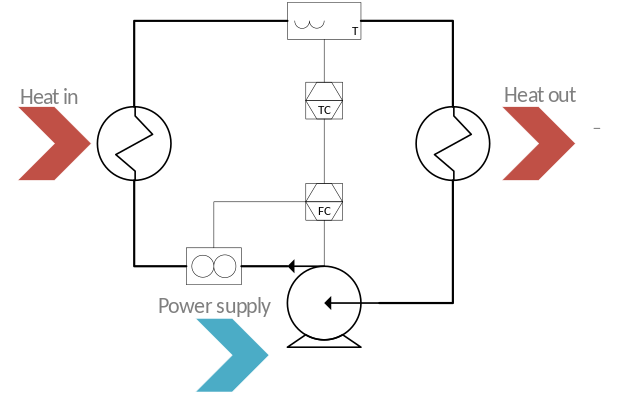Diagram
A diagram is a visual representation used to explain, illustrate, or clarify ideas, systems, or processes. The word originates from the Greek diagramma, meaning a figure or drawing, and has been used for centuries in various disciplines to communicate complex information in a simple and structured way.
In building design and construction, diagrams play a crucial role in conveying technical details, spatial relationships, and construction methods. Architects, engineers, and contractors rely on them to organise thoughts and to ensure accuracy and efficiency throughout a project. Architectural diagrams help to express design concepts, showing how spaces connect, how light enters a building, or how a structure interacts with its surroundings. Structural diagrams provide insight into the load-bearing elements of a building, while mechanical and electrical diagrams illustrate the layout of essential services such as plumbing, heating, and wiring.
Construction diagrams, such as site plans and assembly drawings, guide builders and tradespeople in executing a design correctly. They often include dimensions, annotations, and symbols that convey precise information without the need for lengthy descriptions. These visual tools help to prevent errors, improve coordination among different disciplines, and ensure compliance with regulations and standards.
In modern construction, digital technology has transformed the way diagrams are created and used. Building Information Modelling (BIM) integrates various types of diagrams into a 3D digital model, allowing professionals to visualise and analyse a building before it is constructed. This approach enhances collaboration, reduces waste, and improves efficiency on-site.
Whether hand-drawn or digitally produced, diagrams remain an essential part of the design and construction process, bridging the gap between ideas and reality in the built environment.
[edit] Related articles on Designing Buildings
Featured articles and news
Latest Build UK Building Safety Regime explainer published
Key elements in one short, now updated document.
UKGBC launch the UK Climate Resilience Roadmap
First guidance of its kind on direct climate impacts for the built environment and how it can adapt.
CLC Health, Safety and Wellbeing Strategy 2025
Launched by the Minister for Industry to look at fatalities on site, improving mental health and other issues.
One of the most impressive Victorian architects. Book review.
Common Assessment Standard now with building safety
New CAS update now includes mandatory building safety questions.
RTPI leader to become new CIOB Chief Executive Officer
Dr Victoria Hills MRTPI, FICE to take over after Caroline Gumble’s departure.
Social and affordable housing, a long term plan for delivery
The “Delivering a Decade of Renewal for Social and Affordable Housing” strategy sets out future path.
A change to adoptive architecture
Effects of global weather warming on architectural detailing, material choice and human interaction.
The proposed publicly owned and backed subsidiary of Homes England, to facilitate new homes.
How big is the problem and what can we do to mitigate the effects?
Overheating guidance and tools for building designers
A number of cool guides to help with the heat.
The UK's Modern Industrial Strategy: A 10 year plan
Previous consultation criticism, current key elements and general support with some persisting reservations.
Building Safety Regulator reforms
New roles, new staff and a new fast track service pave the way for a single construction regulator.
Architectural Technologist CPDs and Communications
CIAT CPD… and how you can do it!
Cooling centres and cool spaces
Managing extreme heat in cities by directing the public to places for heat stress relief and water sources.
Winter gardens: A brief history and warm variations
Extending the season with glass in different forms and terms.
Restoring Great Yarmouth's Winter Gardens
Transforming one of the least sustainable constructions imaginable.























